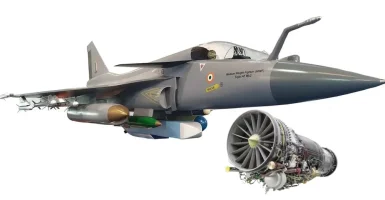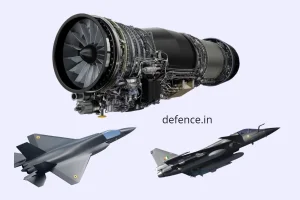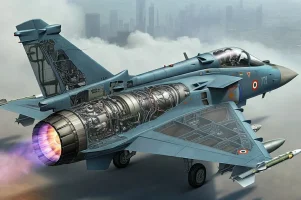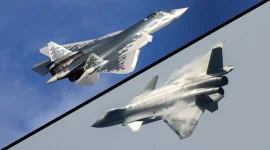- Views: 2K
- Replies: 19
A former head of the Indian Air Force (IAF), Air Chief Marshal R.K.S. Bhadauria (Retd.), has stated his personal belief that India should have pursued the more advanced Tejas Mk2 fighter jet instead of the recently approved purchase of 97 additional Tejas Mk1A aircraft.
In a recent interview, he argued that the superior capabilities of the Mk2 are better suited for the nation's long-term security challenges.
This perspective comes as the Ministry of Defence has formally approved the acquisition of the 97 additional Tejas Mk1A jets, a deal valued at approximately ₹62,000 crore ($7.3 billion), which is expected to be officially signed by March 2026.
The Superior Capabilities of the Tejas Mk2
The Tejas Mk2 is engineered as a next-generation evolution of the original Light Combat Aircraft (LCA), placing it in the 4.5-generation category of multi-role fighters.Developed by Hindustan Aeronautics Limited (HAL) and the Defence Research and Development Organisation (DRDO), it features significant enhancements over the Mk1A.
Key upgrades include:
- Engine and Power: The Mk2 is equipped with a more powerful General Electric F414 engine, producing 98 kilonewtons (kN) of thrust, compared to the 84 kN from the Mk1A’s F404 engine.
- Size and Payload: It possesses a larger frame, allowing it to carry a much heavier payload of 6,500 kg, a substantial increase from the Mk1A's 3,500 kg capacity.
- Operational Range: These improvements give the Mk2 a combat range of 2,500 km, far exceeding the 1,850 km range of the Mk1A.
Advanced Systems and Future-Proofing
Air Chief Marshal Bhadauria highlighted the Mk2's advanced electronics and weapon systems as critical for future combat scenarios.The aircraft is designed to feature the indigenous Uttam Active Electronically Scanned Array (AESA) radar, which has a higher number of transmit/receive modules for better detection capabilities than the Israeli radar used in the initial Mk1A batches.
Furthermore, the Mk2 will integrate a domestically developed electronic warfare suite, the Swayam Raksha Kavach, offering superior self-protection capabilities.
According to the former Air Chief, investing in the Mk2 platform would have better addressed the IAF's urgent need to modernise its fleet and counter the advanced aircraft being operated by regional adversaries, such as China's J-20 and Pakistan's JF-17 Block III.
The IAF is currently operating with approximately 31 fighter squadrons against a sanctioned strength of 42.5, a gap that is widening as older aircraft like the MiG-21 are retired.
The Tejas Mk2, with its enhanced thrust-to-weight ratio and integration of technologies that serve as a bridge to the fifth-generation Advanced Medium Combat Aircraft (AMCA), represents a more "future-proof" investment for Indian air power.
Government's Rationale: Addressing Immediate Needs
Despite the compelling advantages of the Tejas Mk2, the government's decision, approved on August 19, 2025, prioritises a pragmatic approach to quickly bolster the IAF's squadron numbers.The Tejas Mk1A is already in production, with HAL having an established assembly line ready to ramp up manufacturing. The company is expected to deliver the first few of an earlier order of 83 Mk1A jets this year and plans to scale production to between 24 and 36 aircraft annually by 2026.
In contrast, the Tejas Mk2 is still in its developmental phase. Its prototype is scheduled for its first flight by early 2025, but serial production is unlikely to commence before 2028-29, following a rigorous testing and certification period.
By ordering more Mk1A jets, the Ministry of Defence aims to fill immediate operational gaps and ensure that the air force can maintain its combat readiness.
The combined orders of 180 Tejas Mk1A jets (83 plus the new 97) will eventually equip ten IAF squadrons, significantly strengthening the nation's indigenous lightweight fighter fleet while the more advanced Mk2 and AMCA programmes continue to mature.




